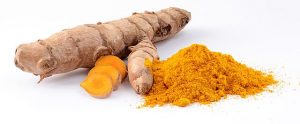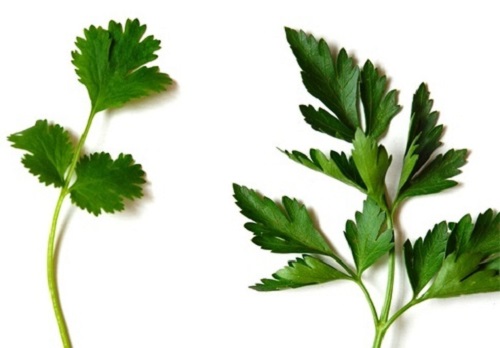 A member of the ginger family, Turmeric is a plant that is increasing being hailed for its spectacular health benefits. Its Rhizome, an underground stem that sprouts the plants roots, has been used in Asian cuisine for hundreds of years to add a deep yellow colour to food. In addition it has been used in alternative medicine to treat a wide range of illnesses particularly those concerned with the liver and bones.
A member of the ginger family, Turmeric is a plant that is increasing being hailed for its spectacular health benefits. Its Rhizome, an underground stem that sprouts the plants roots, has been used in Asian cuisine for hundreds of years to add a deep yellow colour to food. In addition it has been used in alternative medicine to treat a wide range of illnesses particularly those concerned with the liver and bones.
Recent research into Turmeric surprisingly showed a huge number of biological actions and health benefits, mainly coming from the component Curcumin. These studies show huge benefits to Turmeric which is slowly giving it a key place in conventional medicine and home remedies.
In Turmeric sold as curry powder the Curcumin levels are very low and in pure Turmeric powder Curcumin makes up 3.14% on average (Tayyem et al, 2006). To gain the biggest benefits from Turmeric pure powder would be the best, however Curcumin extracts are available and are potentially the best ways to get the benefits it has to give. In addition many people consume black pepper with Curcumin extract and Turmeric as piperine, which gives pepper its distinctive smell, increases the absorption of Curcumin in the human gut by 2000% (Shoba et al, 1998).
Before taking Turmeric for its health benefits, it is first suggested for you to consult your doctor as some of its effects, such as its ability to slow blood clotting, can affect prescribed medicines. In addition always make sure that any Turmeric you purchase is good quality as food supplements are not as strictly regulated as medicines, so caution is necessary.
Increases speed of Wound Healing
Panchatcharam et al. (2006) have shown that in mice Turmeric, and especially the Curcumin within the Turmeric, increase the speed of many of the key steps in the wound healing process and helps reconstruct the damaged tissue. Akbik et al. (2014) extended this research to humans and found similar results. This could be attributed to Curcumins strong anti-oxidant properties which is essential in wound healing.
Both of these studies found these advantageous effects after rubbing Curcumin on the wound rather than ingestion, which would likely have no effect. Currently an altered and more efficient topical treatment is trying to be created using Curcumin to rub onto wounds to reduce healing time, however until this is produced rubbing some Turmeric on the wound is likely to speed up the time taken for cuts and scrapes to heal back to normal.
Has a potent anti-inflammatory effect
Inflammation is incredibly important for our bodies as it initiates repair of damaged tissue all over the body and helps fight the causes of infection and illness. However, our bodies are so efficient at the process that sometimes it can initiated by modern luxuries our bodies are not used to, especially our diets. Inflammation, especially when chronic, has been linked to atherosclerosis and heart disease, and tumour progression in cancer (Libby, 2002) (Coussens and Werb, 2002).
It has been shown that Curcumin has potent anti-inflammatory effects, and in fact it is being investigated as a therapeutic agent in a wide range of diseases from cancer to irritable bowel disease (Jurenka, 2009). This is because Curcumin reduces the activity of NF-kB, a molecule that increases inflammation and has been associated with cancer and almost all chronic inflammation associated diseases (Marin et al., 2007) (Singh and Aggarwal, 1995).
Can reduce your risk of heart disease
As well as its anti-inflammatory effect contributing Turmerics ability to reduce heart disease risk, it has a number of other biological effects that have a similar effect. Curcumin is known to inhibit a protein known as p300 that plays a key role in muscle growth in the heart and an increased likelihood of heart failure in animal models (Wongcharoen and Phrommintikul, 2009).
As humans age the lining of blood vessels in the body which regulate blood content, known as the vascular endothelial, degenerates, which can lead to cardiovascular disease. In an 8 weeks study on postmenopausal women, groups undertaking moderate cardio exercise and groups taking oral Curcumin had the same improvements in the rate at which their blood vessels changed in response to volume of blood flow (Akazawa et al., 2012). Although this shows that Curcumin has the same effect as moderate exercise on vascular endothelial health Curcumin would work best when used in conjunction with exercise, not instead of.
Has potential in treating Arthritis
Arthritis is a complex disease as there are different types that show symptoms in different joints in the body. A common trademark of arthritis is inflammation in the joints which has led to research into Curcumins use in treating the disease, due to its anti-inflammatory effects. Currently drugs based around Curcumin are being licensed and tested for management of osteoarthritis and are showing good results that are promising for the future (Belcaro et al., 2010).
In Rheumatoid arthritis Curcumin alone was shown to be more effective than a current drug used to treat the disease (Chandran and Goel, 2012). The Curcumin significantly reduced activity of the disease and tenderness of the joints and most importantly in this case did not show and side effects or negative effects, something that most drugs used in disease treatments can’t boast.
Helps Combat Depression
Curcumin has shown a potential effect in the treatment of depression. In a small 60 person study the effect of Curcumin was compared to the common anti-depressant Prozac over 6 weeks. The Curcumin had the same effect on reducing depression as the Prozac in patients without the side effects of suicidal thoughts and other psychotic disorders (Sanmukhani et al., 2014). Patients that took both Prozac and Curcumin had the greatest reduction in depression levels however, showing Curcumins potential use as a combinatory drug to be used with existing medication.
Brain dopamine and serotonin levels were increased by Curcumin consumption in mice, two hormones that are associated with depression when levels are too low (Xu et al., 2005). The use of curcumin in the treatment of depression is so important as current depression medicines are associated with a lot of negative side effects which curcumin does not have.
Conclusion
Turmeric has a number of fantastic benefits in a wide range of conditions, and serves as an amazing supplement to help with existing problems and prevent them in the future. However some things must be taken into account before it is taken. High doses of turmeric can cause diarrhea and nausea and only so much Curcumin can be absorbed in the gut at one time, so higher doses does not necessarily mean increased effectiveness. In addition, as previously stated, the supplement industry isn’t regulated so being aware of Curcumin content in the Turmeric you buy is very important.
Most importantly, the results of these studies have to be taken with a grain of salt. Although the benefits of turmeric are clearly positive, it is by no means a wonder drug and should never be taken instead of, only as well as, prescribed medicine.










Leave a Reply